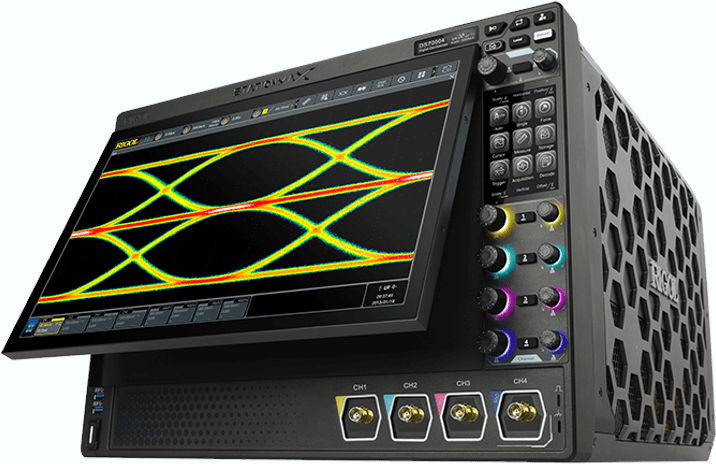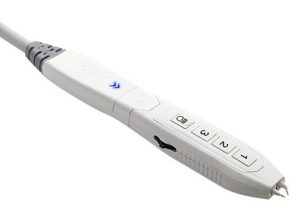
It is called DS70000, and provides four channels with 10Gsample/s on all channels (or 20Gsample/s on fewer), 1 million waveform/s capture, 2Gpoint maximum storage, and 8bit ADCs with resolution up to 16bit. There is also a 3GHz version.
For the brand conscious, the scope is also to be called ‘StationMax’, ‘UltraVision III’ is the platform within, the front-end asic is ‘Phoenix, and it includes UltraReal’ spectrum analysis.
Alongside real-time oscilloscope functions and real-time spectrum analysis, functions include: multi-domain analysis, eye diagrams, jitter analysis, high speed bus compliance and serial bus decoding.
The user interface is new, built around a 15.6in multi-touch display with “an electronically controlled tilt function to optimise viewing and usability”, according to the company. This touch multi-panel display simplifies analysis by isolating important measurements in separate windows including real-time spectrum view, multiple FFT and math functions, jitter and real-time eye. For engineers who prefer tactile control, the instrument has separate scale and position knobs for each channel and the horizontal. Channel controls are back-lit and colour coded with Rigol probes.”
 There are also new 3.5 and 7 GHz (photo left) active differential probes, said by the company to deliver “excellent 3 and 5GHz measurements to the probe tip. These probes have automatic spacing controls with three user-defined settings at the touch of a button, a work light and automatic colour-coded LEDs to match the signal on the display”.
There are also new 3.5 and 7 GHz (photo left) active differential probes, said by the company to deliver “excellent 3 and 5GHz measurements to the probe tip. These probes have automatic spacing controls with three user-defined settings at the touch of a button, a work light and automatic colour-coded LEDs to match the signal on the display”.
USB 3.0 host and device communication is included for storage and computer control, then there is Gigabit LAN for data transfer, HDMI for an external display and onboard FTP data sharing.







